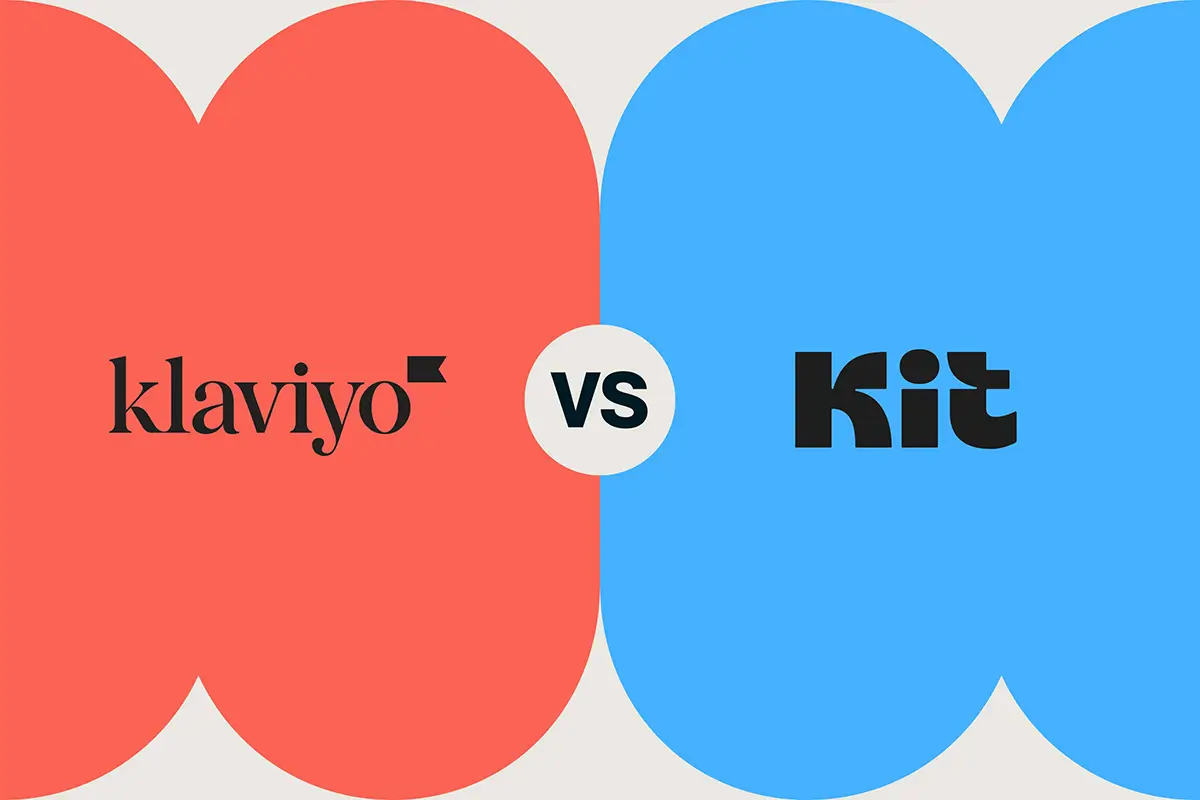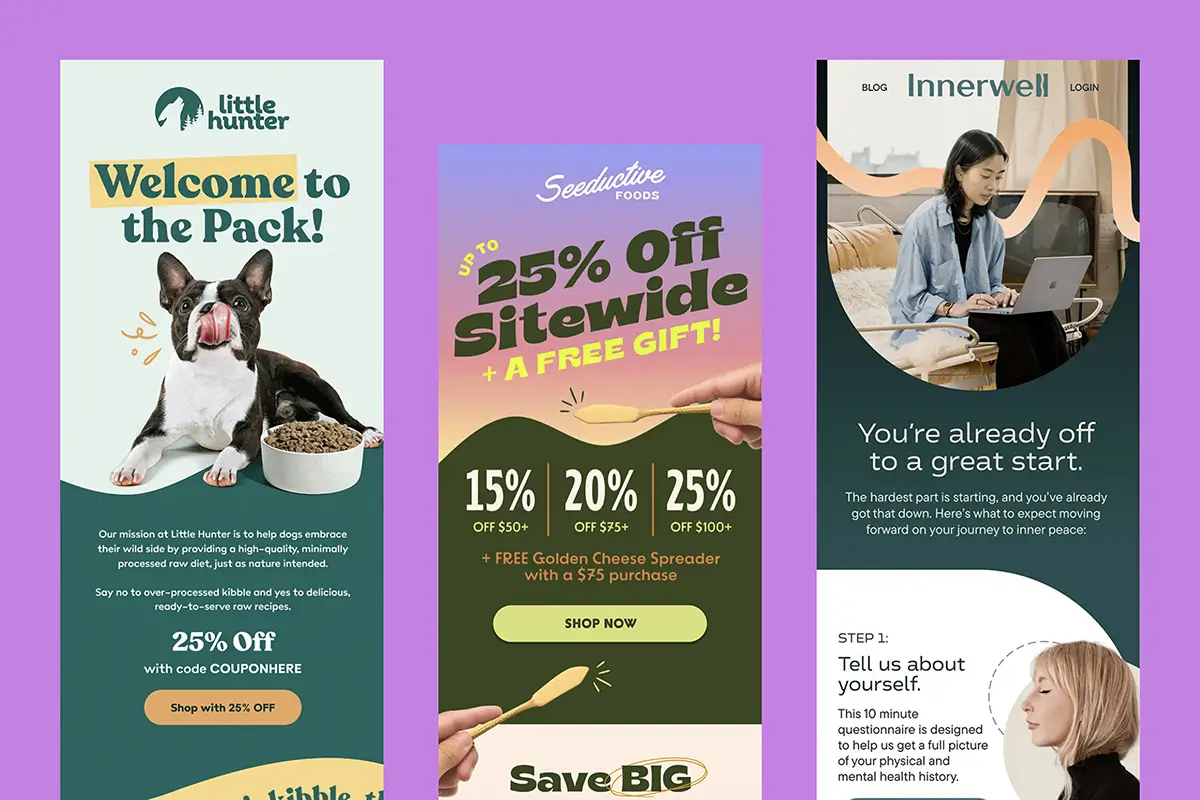With email marketing delivering an average ROI of $42 for every $1 spent, picking the right platform isn’t just a tech decision; it’s a financial one.
Choosing an email platform is similar to selecting a streaming service. They all send messages, just like every service plays shows, but one might have everything you love, while the other leaves you wondering why you’re paying for entertainment you'll never watch.
Klaviyo and ConvertKit both sit at the top of the email marketing world, but for entirely different reasons. Klaviyo is your big-budget blockbuster: packed with power, complexity, and customization. ConvertKit? It’s the smart indie favorite; clean, simple, and built for creators who care about connection over complexity.
Let’s break down what makes each platform shine (and where they fall short) so you can decide which one actually fits your business.
Klaviyo vs ConvertKit: Platform Overview
Klaviyo: Built for E-Commerce
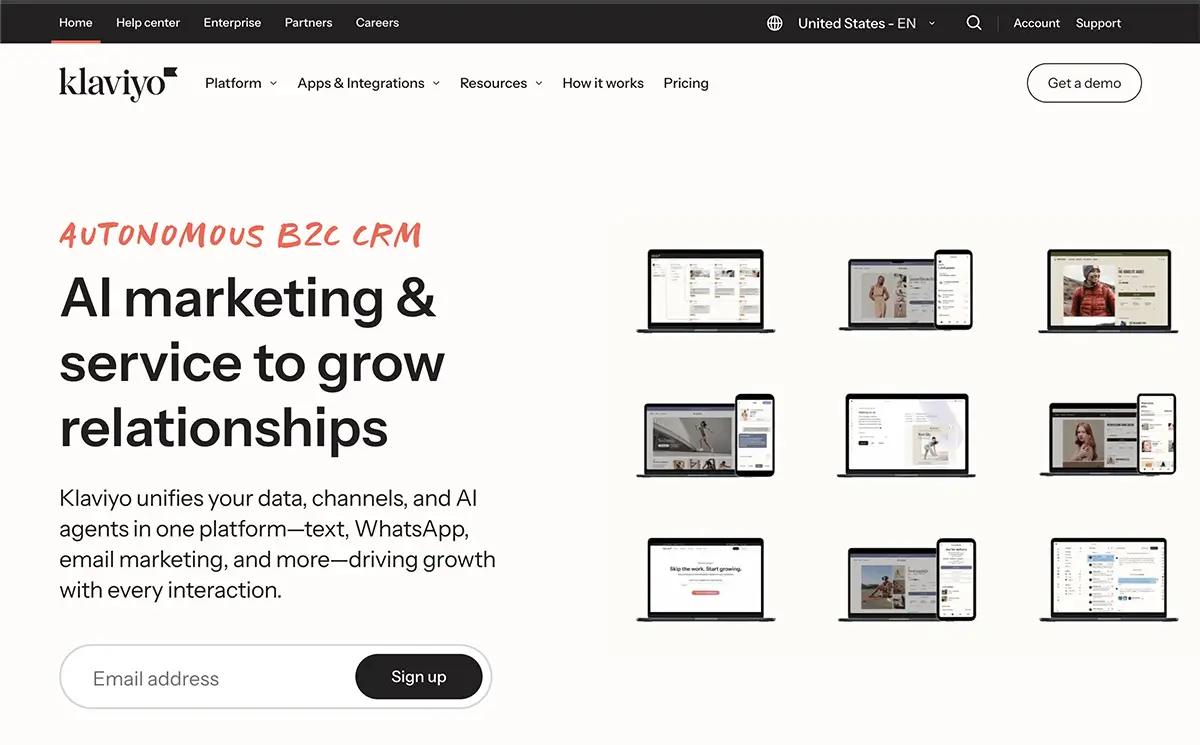
Klaviyo was founded by e-commerce professionals who were frustrated with email tools that couldn’t deliver the insights or flexibility they needed. They set out to build a platform that tracks and uses customer behavior at every step. From what people buy and when, to what they browse but don’t purchase, Klaviyo provides a clear and detailed view of how customers interact with your store.
"We started with a simple idea that businesses should own their data and use it to create better, more personalized experiences for their customers."
— Andrew Bialecki, Klaviyo co-founder and CEO
If you sell online and aren’t using customer data, you’re leaving money on the table. Klaviyo excels at revenue tracking, showing you exactly how every email and automation contributes to your bottom line.
ConvertKit: Made for Creators
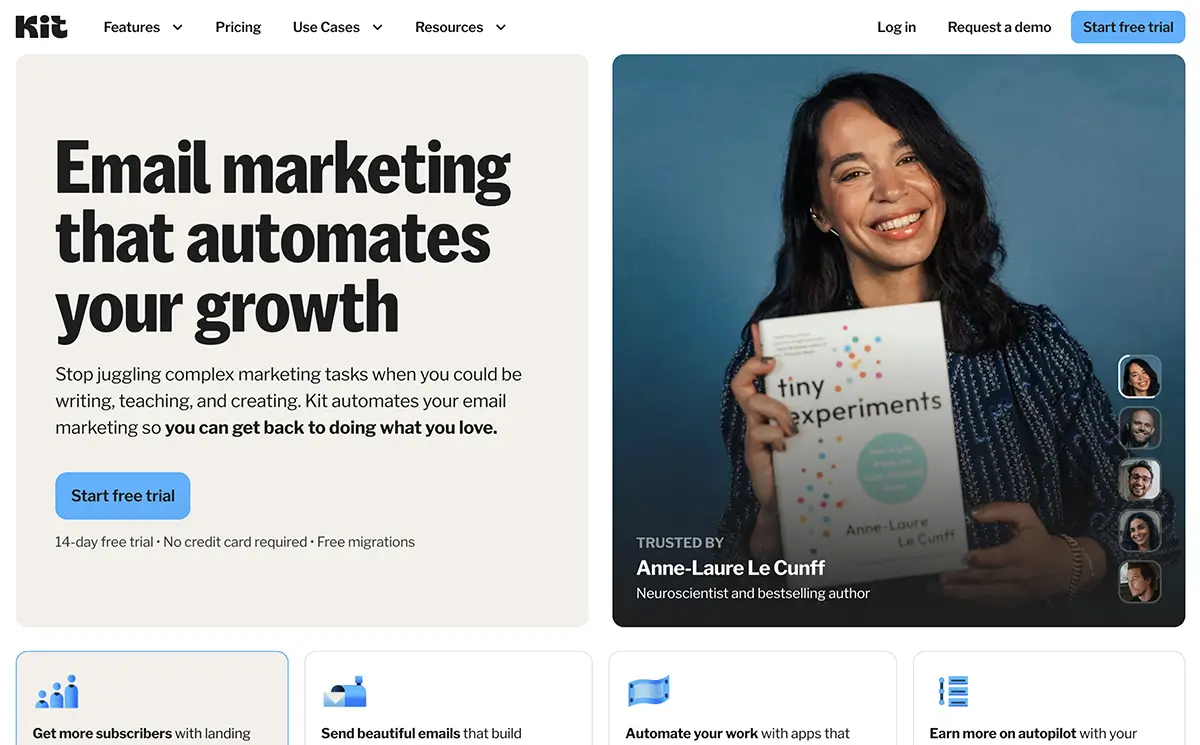
ConvertKit was built for creators who want to send great emails without the added complexity. It’s ideal for bloggers, podcasters, and course creators who want to share their work and stay consistent without turning email marketing into a chore.
The idea is simple: you focus on creating, and ConvertKit takes care of the rest. It keeps things straightforward and intentional, which is exactly what many creators are looking for.
Email Design: Klaviyo vs ConvertKit Templates
Klaviyo Email Design and Template Capabilities

Klaviyo’s email designer gives you plenty of creative freedom. It can feel complex at first, but once you’ve spent some time exploring, it becomes a powerful tool for building high-quality campaigns and flows.
What you're getting:
- 300+ pre-built templates that actually look modern
- Tons of customization (colors, fonts, spacing, all of it)
- Product blocks that pull live data from your store
- Full HTML/CSS access if you want total control
- Mobile optimization that’s built in and easy to fine-tune
- An advanced email builder that’s more flexible and capable than most
The templates are built for selling, packed with features that help you showcase products and drive conversions. You’ll find personalized product recommendations, dynamic content blocks, and automations designed to turn browsers into buyers.
Klaviyo’s email builder stands out as one of the best available (and I've tried a lot). It’s intuitive, flexible, and frequently updated with new capabilities that make designing and customizing campaigns easier than ever. Everything about the platform is designed to help you earn more from every send.
ConvertKit Email Design: Simple Templates for Creators

ConvertKit’s approach is about keeping things simple, genuine, and personal. Many of its users aren’t professional marketers; they’re everyday people building something they care about. Think moms running small businesses, writers with newsletters, coaches, artists, and podcasters building loyal audiences.
What you're getting:
- Clean templates that let your content shine
- Simple builder (no tutorial needed)
- Text-focused layouts that feel personal
- Enough customization to match your brand
- HTML/CSS template option if you want more control
ConvertKit’s templates and builder aren’t designed to impress with flashy visuals. They’re built for clarity, simplicity, and connection. The base templates may seem a bit plain, but that’s intentional. The focus is on your words and message, not heavy design.
If you want a more branded look, you can create a custom template base with your own fonts, colors, and structure. Once set up, it’s easy to apply that design across your broadcasts and sequences for a consistent, polished feel.
Email Automation: Klaviyo Flows vs ConvertKit Sequences
Klaviyo Automation and Flows
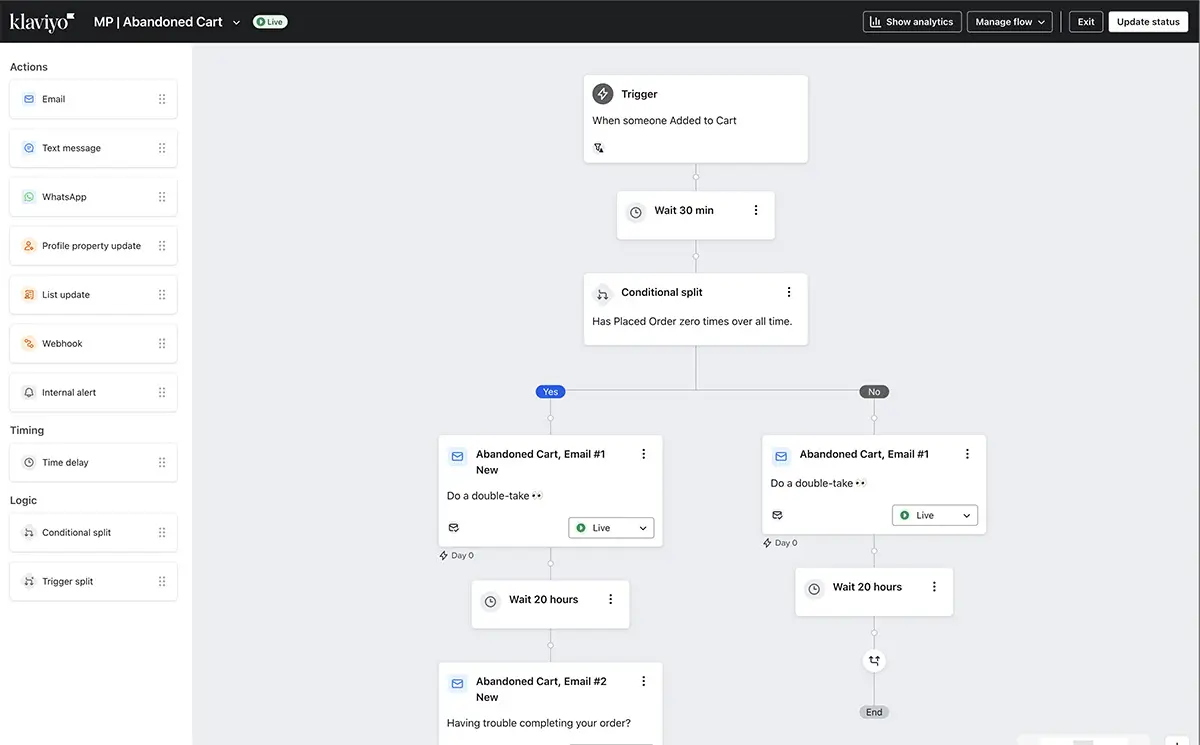
Klaviyo’s automation system is built for e-commerce and offers some of the most advanced capabilities available. You can create multi-step workflows that respond to real customer actions such as viewing a product, starting checkout, or completing a purchase. Every message in a flow can be adjusted based on engagement, ensuring emails feel timely and relevant.
Pre-built flows you get:
- Abandoned cart recovery
- Browse abandonment
- Post-purchase follow-ups
- Win-back campaigns
- Back-in-stock alerts
- Customer reactivation based on purchase history
Each flow can be customized with filters, conditions, and delays to match your goals. This level of behavioral automation gives e-commerce brands a major advantage compared to simpler creator-focused platforms like ConvertKit.
ConvertKit Automation: Simplicity That Works
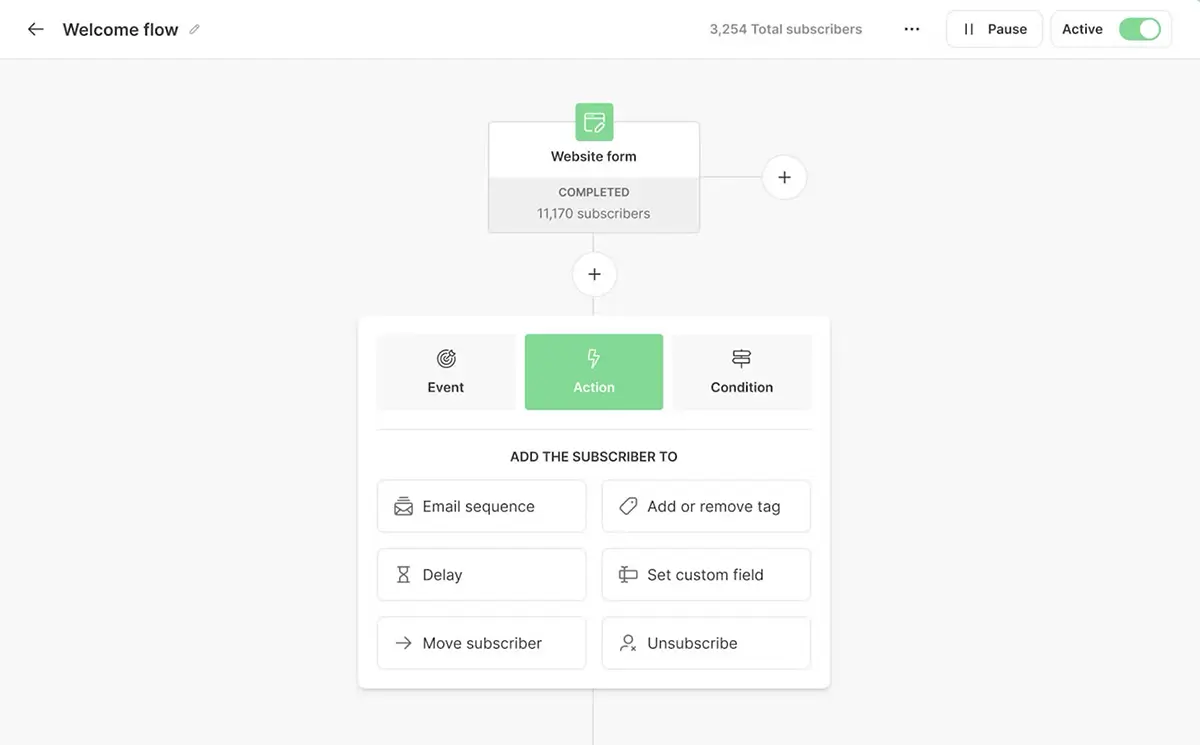
ConvertKit’s visual automation builder is clean and simple. It does what creators need without unnecessary complexity. You can build automations by connecting forms, tags, and email sequences in a visual layout that makes it easy to see how subscribers move through your funnel. Setting up triggers, paths, and actions only takes a few clicks.
Main features:
- Visual builder that’s intuitive and easy to use
- Tag-based segmentation to organize subscribers by action or interest
- Email sequences for welcome series, newsletters, and course delivery
- Event triggers for form submissions, purchases, or link clicks
- Link triggers that automatically add or remove tags
ConvertKit is ideal for nurture sequences, course delivery, and audience engagement. It doesn’t use predictive or behavior-based automation like Klaviyo, but it handles subscriber tagging, content delivery, and personalization smoothly. For creators who want automation that works without overcomplicating their workflow, it’s an excellent fit.
Segmentation & Personalization Features Compared
Sending the same email to everyone? That's so 2010. Both platforms let you segment, but they approach it differently.
Klaviyo: Next-Level Segmentation
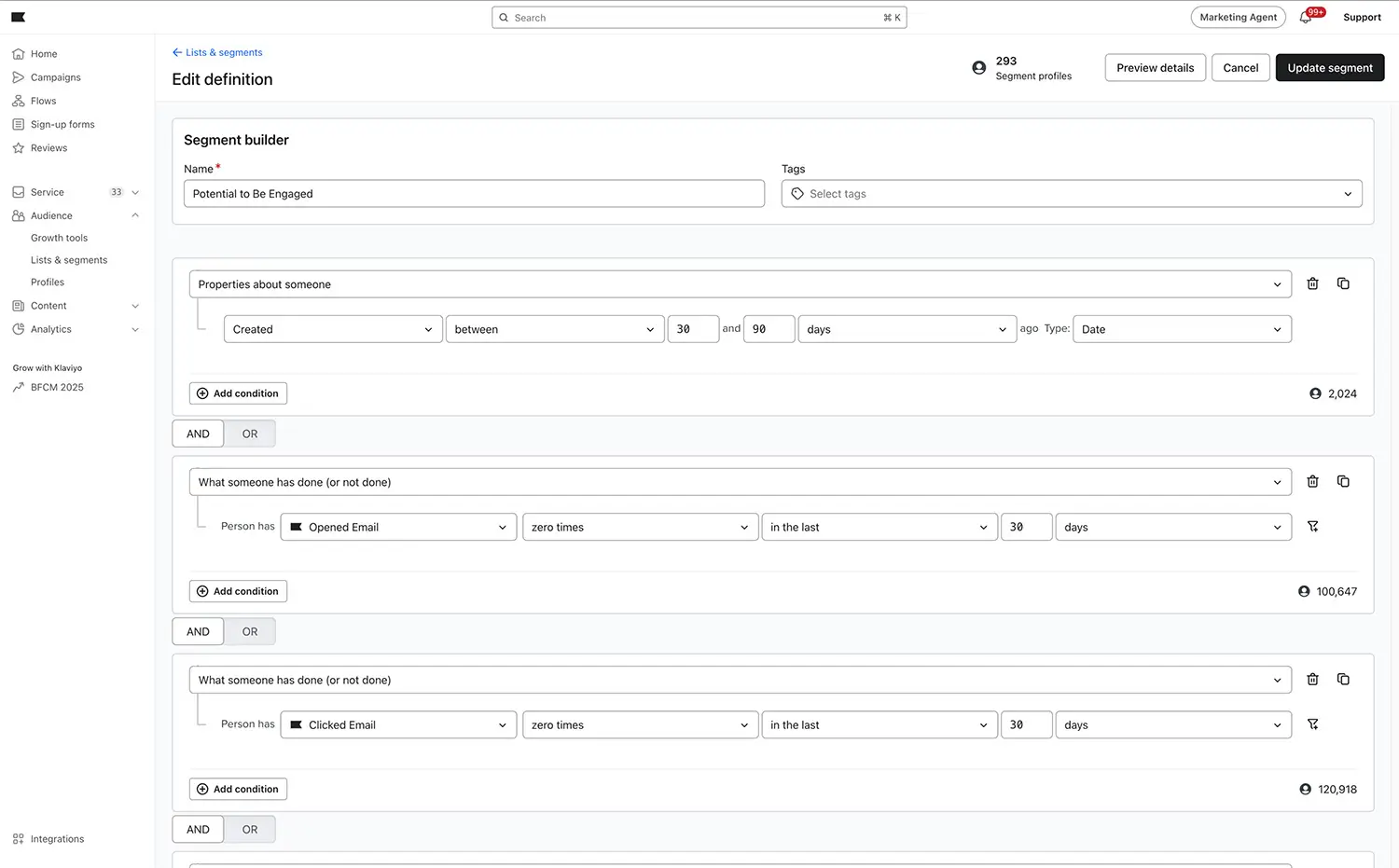
Klaviyo’s segmentation capabilities are among the most advanced in email marketing. Every piece of customer data can be used to create highly targeted groups, allowing you to send messages that feel personal and relevant. The platform automatically tracks behavior across your website and email campaigns, giving you a complete view of each customer’s journey.
You can segment by:
- Purchase behavior (what they bought, when, and how much)
- Browsing activity (products viewed or added to cart)
- Email engagement (opens, clicks, and recent activity)
- Predictive analytics (likelihood to purchase or churn)
- Customer lifetime value
- Demographic and location data
Klaviyo’s predictive analytics take segmentation a step further by estimating who’s most likely to buy again, who might unsubscribe, and how much each customer is expected to spend over time. It’s a data-driven approach to personalization that helps brands send smarter, more profitable emails.
ConvertKit: Tag-Based Simplicity

ConvertKit uses a simple system of tags and segments to organize subscribers. Tags are applied based on specific actions, like signing up for a form, clicking a link, or purchasing a product. Segments, on the other hand, are dynamic groups that combine tags, forms, or other filters to target specific parts of your audience.
Segmentation options:
- Tags for organizing subscribers by actions or interests
- Segments for combining multiple filters into targeted groups
- Automatic tagging based on link clicks or form signups
- Subscriber scoring to identify your most engaged readers
- Purchase history tracking for connected commerce tools
- Custom fields for collecting additional subscriber details
ConvertKit’s system isn’t as data-heavy as Klaviyo’s, but it gives creators plenty of control to send personalized, relevant content without the complexity of advanced e-commerce automation.
Forms, Popups, and Landing Pages
Klaviyo: Forms and Popups Built for E-commerce Growth
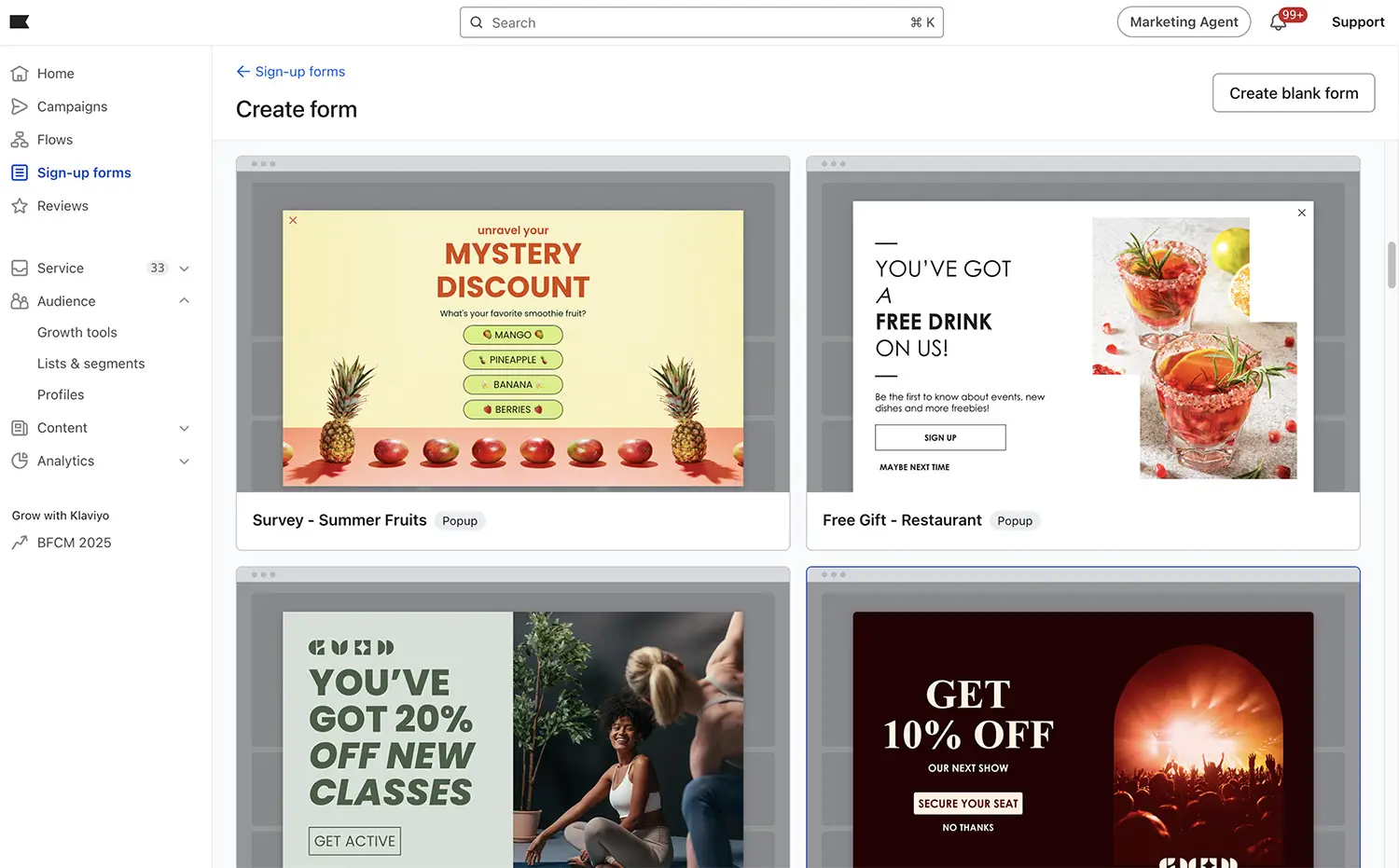
Klaviyo gives you a complete set of on-site signup tools for turning visitors into subscribers. You can build embedded forms, popups, and flyouts that match your brand and trigger based on customer behavior. Its drag-and-drop builder is user-friendly and allows detailed customization without needing to touch code.
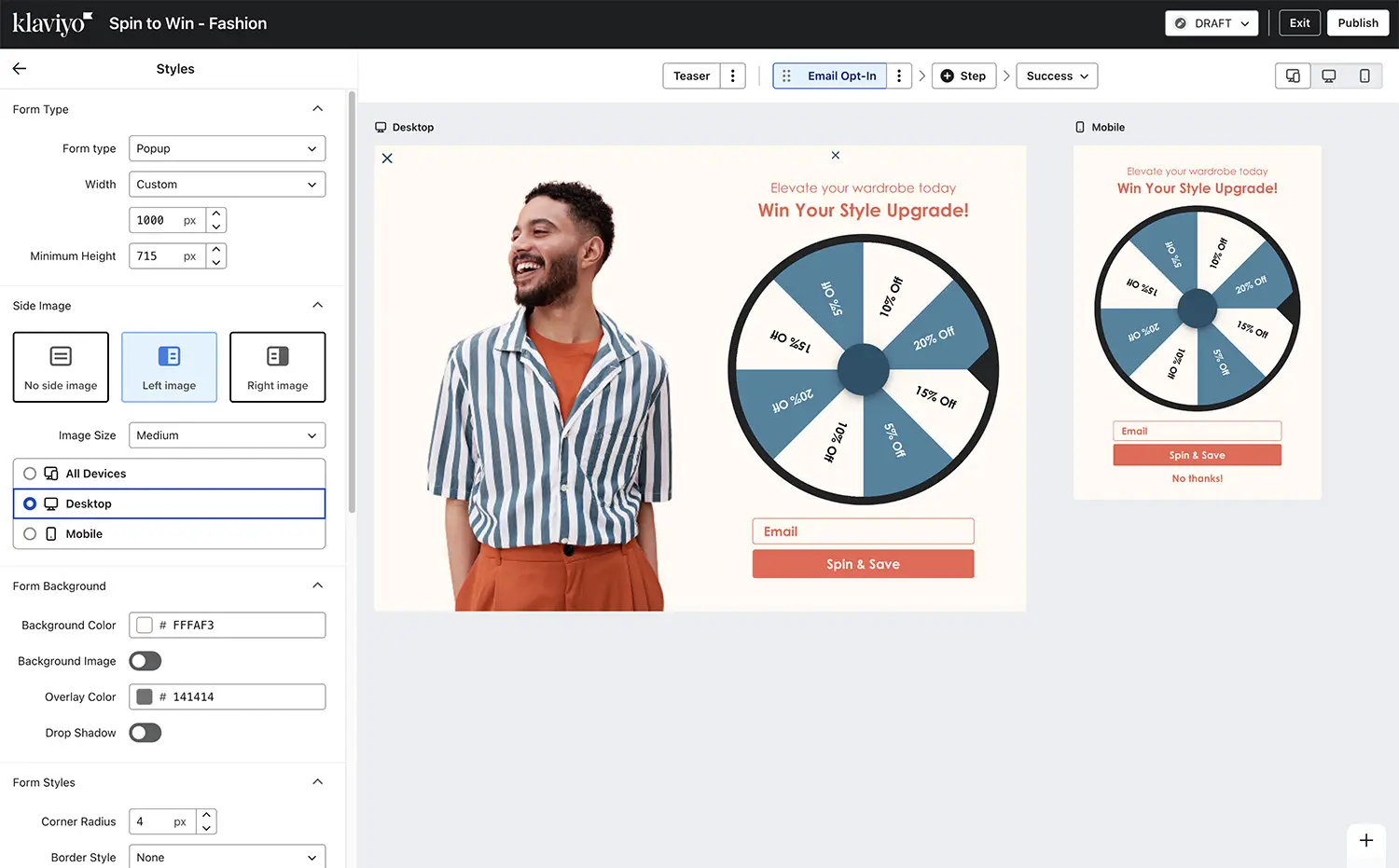
What Klaviyo offers:
- Embedded forms, popups, and flyouts
- Behavioral targeting (time on site, scroll depth, exit intent, etc.)
- A/B testing for forms and incentives
- Real-time syncing with customer and segment data
- Full control over design and layout on mobile and desktop
What Klaviyo doesn’t offer
- No dedicated landing page builder, but you can create a standalone page by assigning a form to a specific URL
Klaviyo’s builder is intuitive and built for marketers. You can easily adjust spacing, add images, or change layouts, making it a strong choice for teams that want a polished look without relying on a developer.
ConvertKit: Simple Forms and Landing Pages for Creators


ConvertKit’s forms and landing pages are made for simplicity, not design flexibility. You can quickly create signups for newsletters, downloads, or webinars using pre-made templates, but the out-of-the-box styling is minimal. To achieve a more branded look, you’ll need to add custom CSS.

What ConvertKit offers:
- Inline, modal, and slide-in forms
- Fully hosted landing pages with basic templates
- Direct integration with tags, sequences, and automations
- Built-in incentive delivery for freebies and downloads
- Option to host on ConvertKit’s domain or your own
What ConvertKit doesn’t offer:
- Advanced targeting or A/B testing for forms
- Extensive design control without custom code
ConvertKit’s strength lies in its simplicity, but that comes with trade-offs. It’s perfect for creators who want to publish quickly, but users looking for highly customized or interactive designs may find the styling options limited.
Klaviyo and ConvertKit Integrations Compared
Klaviyo's E-commerce Integrations
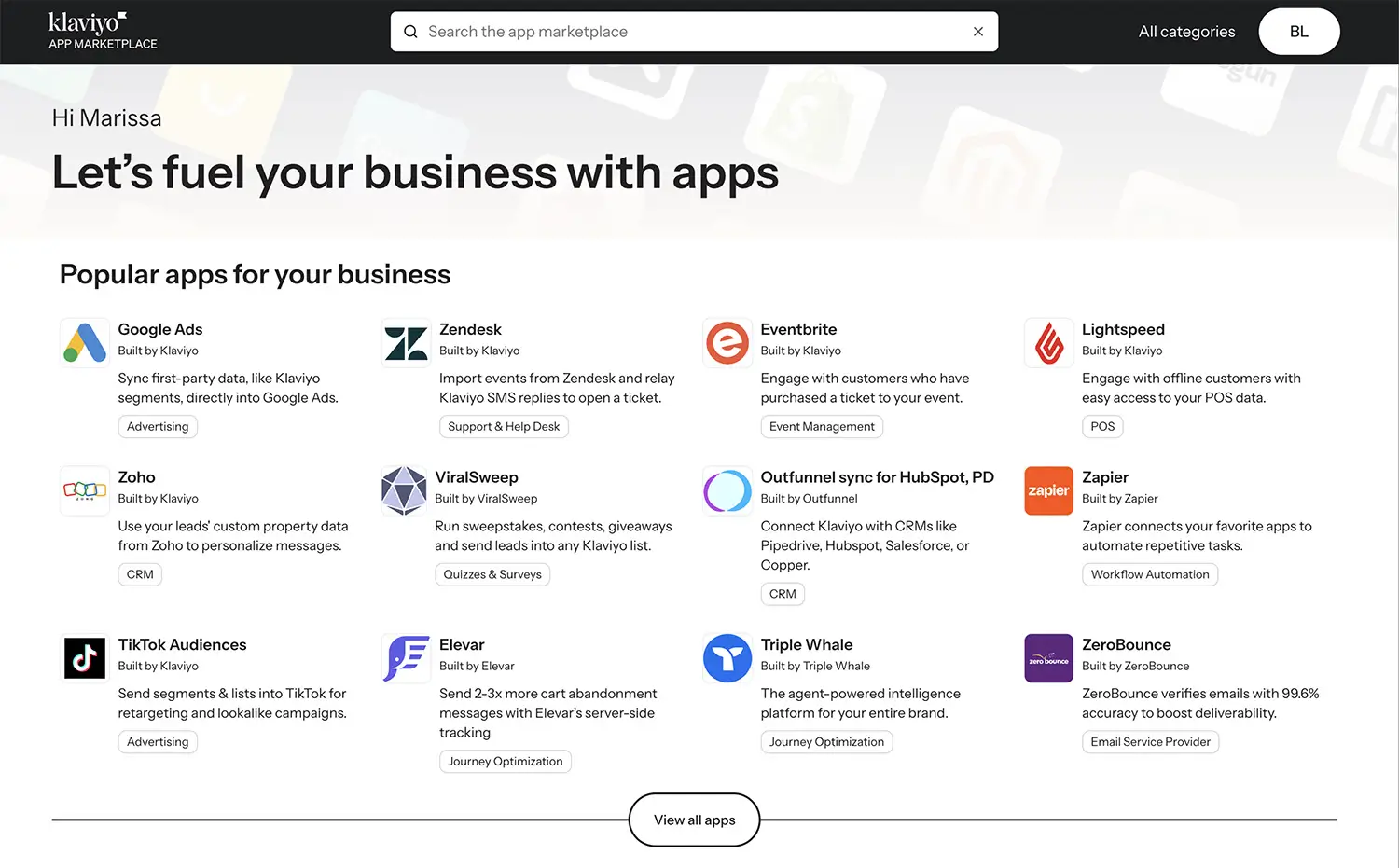
Klaviyo integrates seamlessly with nearly every major e-commerce platform, making it one of the most versatile tools for online stores. Its real-time data syncing ensures customer activity, purchase history, and product information stay up to date across your store and email marketing.
Main integrations:
- Shopify (deep, native integration with advanced analytics and automation)
- WooCommerce, BigCommerce, and Magento
- Facebook and Instagram for ad retargeting and lead capture
- Review and loyalty platforms for personalized follow-ups
- SMS platforms for multi-channel marketing (Klaviyo also has its own SMS capabilities built in)
Klaviyo’s API is also well-documented and reliable, allowing for custom integrations or connections with less common platforms. This level of flexibility makes it a strong choice for e-commerce businesses that rely on accurate, connected data.
ConvertKit's Creator Integrations
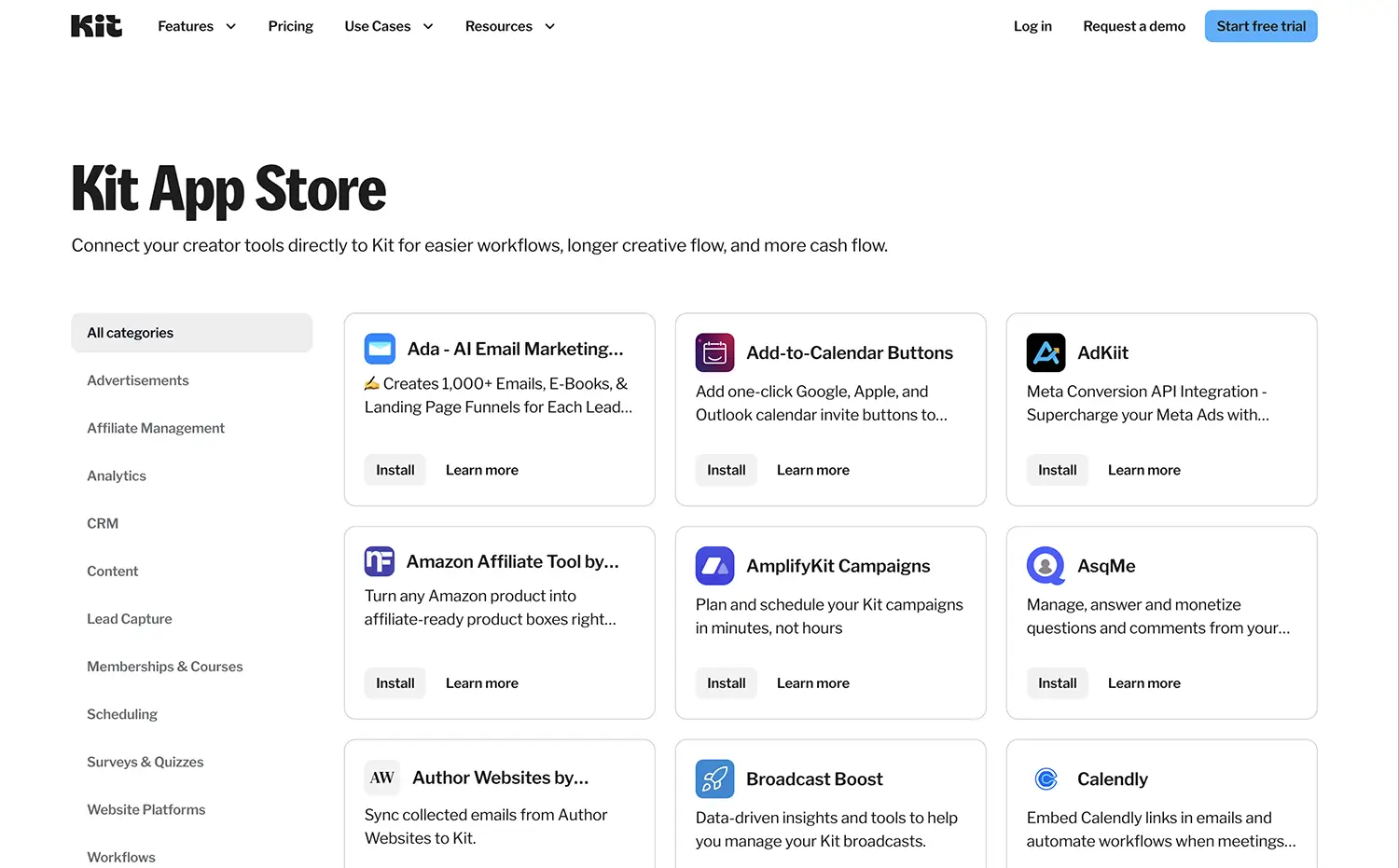
ConvertKit connects with the tools most creators already use to run their businesses. Its integrations are designed around content creation, digital products, and community building rather than e-commerce storefronts.
Popular integrations:
- WordPress for embedding forms and growing your list
- Teachable, Thinkific, and Kajabi for selling online courses
- Stripe and PayPal for processing payments
- Zapier for connecting with thousands of additional apps
- Webinar platforms for hosting live sessions and lead generation
ConvertKit focuses on the essentials creators actually need, offering simple, reliable connections instead of an overwhelming list of add-ons.
Analytics & Reporting: ConvertKit vs Klaviyo
Klaviyo: All the Data

Klaviyo’s analytics go deep, giving e-commerce brands the kind of insight that turns data into revenue. You can track how every email, flow, and campaign contributes to sales and engagement in real time. Detailed reports make it easy to see what’s working, what’s not, and where to optimize next.
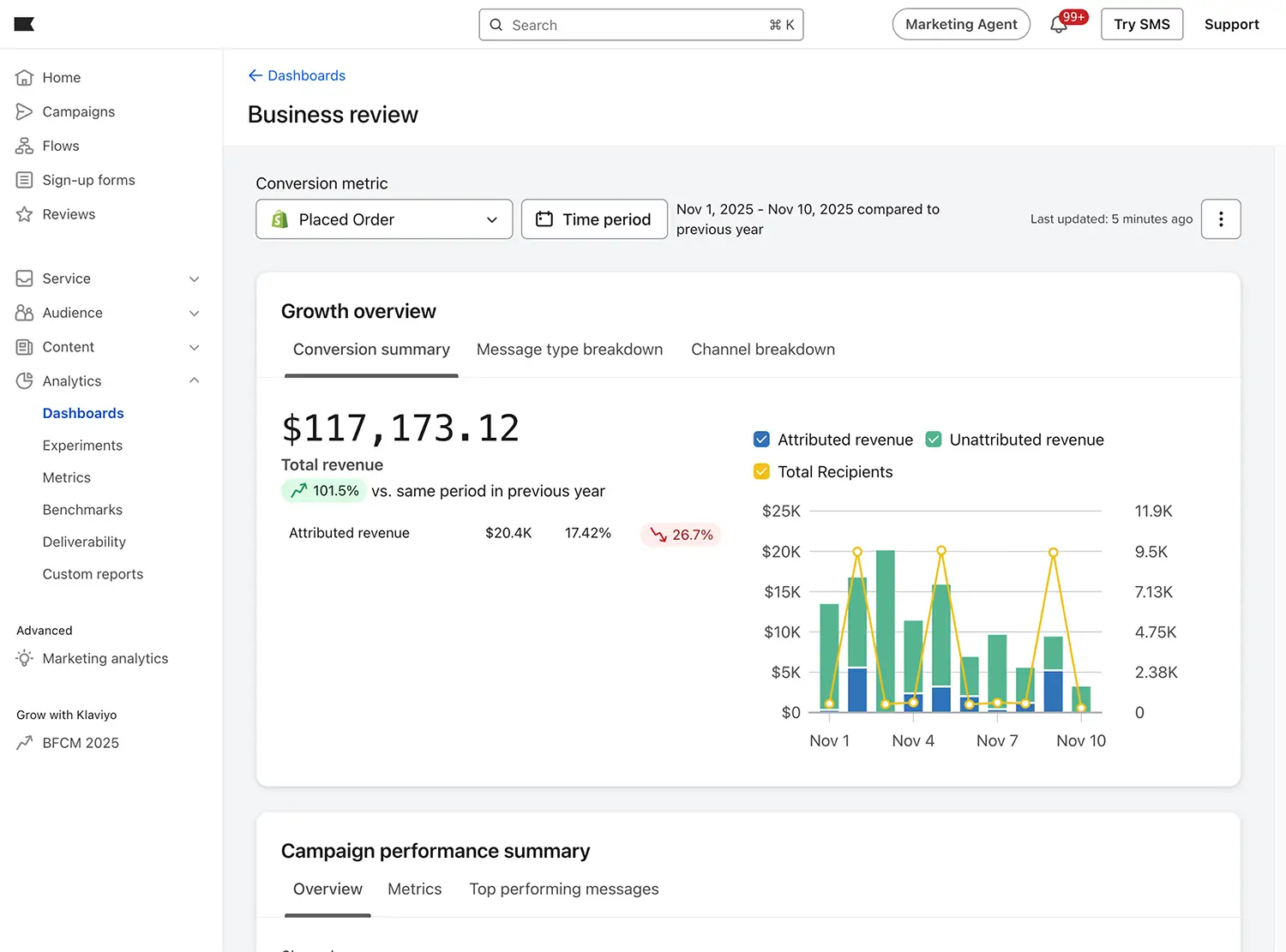
What you can track:
- Revenue per email and campaign
- Customer lifetime value tracking
- Cohort and retention analysis
- Attribution data showing which emails drive sales
- Flow performance and engagement metrics
- Predictive analytics for forecasting future revenue
Klaviyo’s reporting is powerful and detailed, giving e-commerce brands a clear picture of performance and profitability.
ConvertKit: The Essentials

ConvertKit’s reporting keeps things simple and centered on what matters most to creators. Instead of complex dashboards, it highlights key metrics that show how your audience is growing and engaging with your content.
What you can track:
- Subscriber growth over time
- Email performance with open and click rates
- Form and landing page conversion data
- Product and revenue tracking for digital sales
- Basic automation performance insights
ConvertKit’s analytics are designed to give creators a clear view of what’s resonating without data overload. It’s straightforward, practical, and focused on helping you make better content decisions.
Email Deliverability: Landing in Inboxes
An email sitting in spam doesn’t make you any money. Both Klaviyo and ConvertKit take deliverability seriously, though they handle it in different ways.
Klaviyo: Best for large-scale sending
Offers dedicated IPs for high-volume senders, real-time monitoring, and built-in spam and A/B testing tools. Larger accounts get access to dedicated deliverability support to troubleshoot issues and maintain sender reputation.
ConvertKit: Built for consistent, creator-focused delivery
Uses shared IP pools with smart reputation management, automatic list cleaning, and proactive warnings if your sending habits could hurt deliverability. The focus is on good list hygiene and sending quality content to people who actually want it.
Both platforms maintain strong deliverability rates. Unless you’re sending to cold lists or ignoring engagement metrics, your emails should reliably reach the inbox.
Klaviyo vs ConvertKit Pricing Breakdown
Let’s talk money. Both platforms base their pricing on list size, but the cost difference becomes more noticeable as you grow.
Klaviyo Pricing
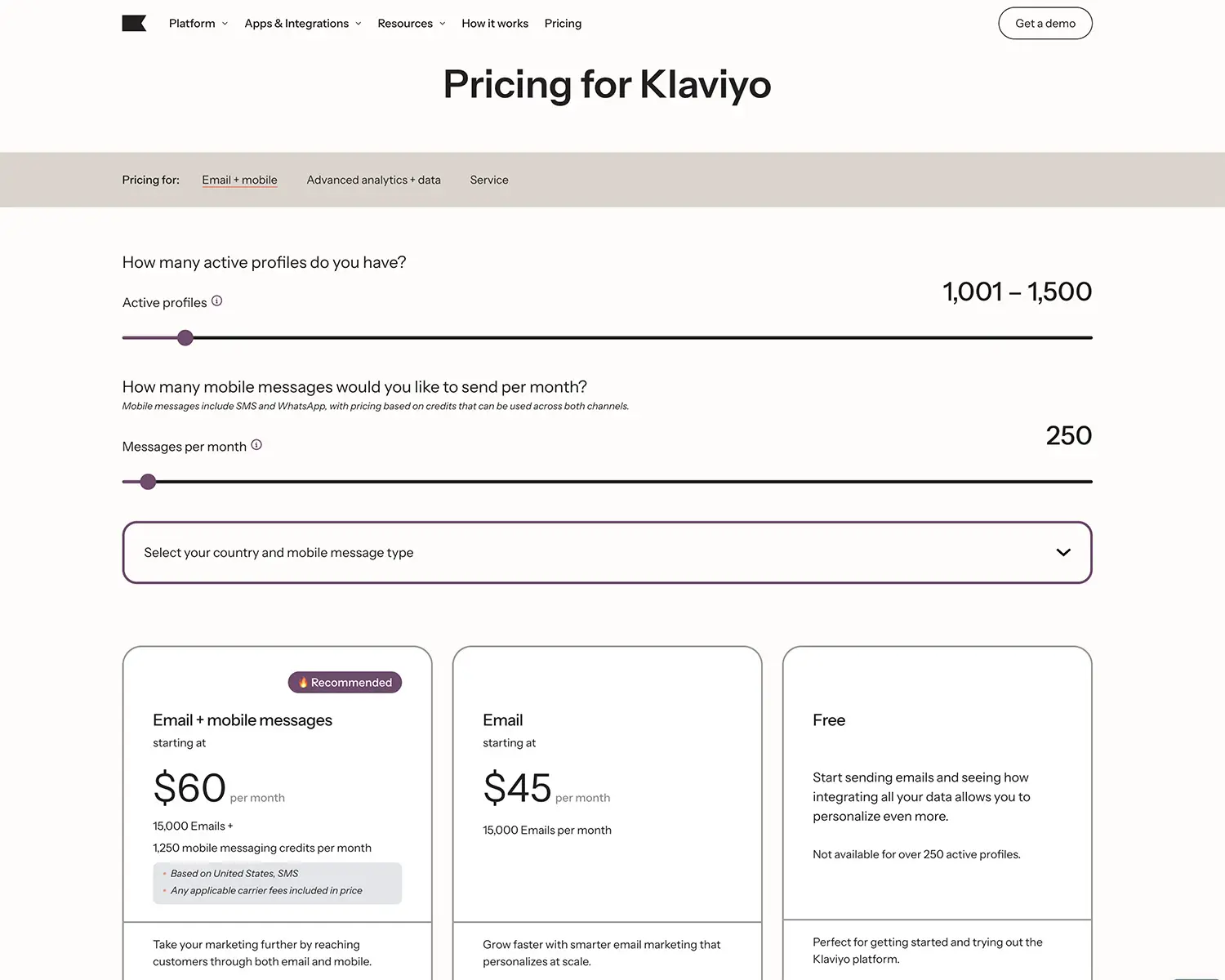
Klaviyo starts at around $45 per month for up to 1,500 contacts and increases as your list grows. It can be expensive at scale, but for e-commerce stores, the return is often worth it since automations like abandoned cart recovery can quickly cover the cost.
- Free plan: Up to 250 active profiles and 500 monthly email sends (includes core features)
- Email Plan: Starting at $20 with 5,000 email sends and up to 500 active profiles per month
- Email + SMS plan: Starting at $20 with 5,000 email sends, 150 mobile credits, and up to 500 active profiles per month
ConvertKit Pricing
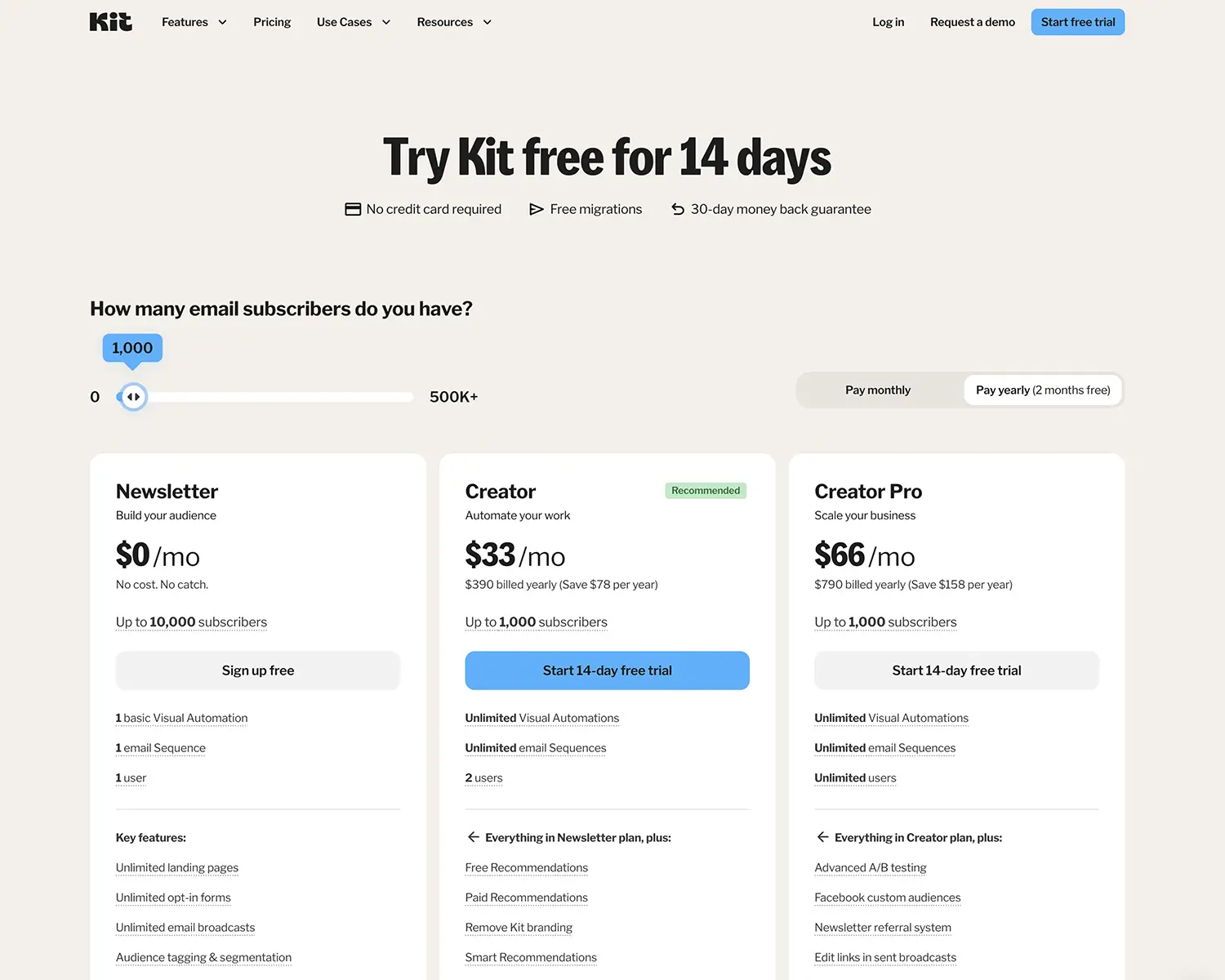
ConvertKit is designed for creators and has a simpler pricing structure. The free plan covers up to 10,000 subscribers, with paid plans unlocking automations, analytics, and advanced features.
- Free plan: up to 10,000 subscribers
- Creator plan: Starting at $39 per month for 1,000 subscribers
- Creator Pro: Starting at $79 per month for 1,000 subscribers with added analytics and automation features
Real Price Comparison
- At 5,000 subscribers, Klaviyo costs around $100 per month, while ConvertKit is about $89.
- At 25,000 subscribers, Klaviyo is roughly $400 per month compared to $199 for ConvertKit.
Klaviyo costs more but offers powerful e-commerce tools that can easily pay for themselves. ConvertKit is more budget-friendly and ideal for creators who want a simpler, dependable setup.
User Experience: Ease of Use Compared
Klaviyo's Learning Curve
Klaviyo can feel complex at first, especially for beginners. The dashboard is packed with features, and it takes time to understand how everything connects. However, the platform offers strong documentation, tutorials, and onboarding to help you get up to speed.
ConvertKit's Easy Setup
ConvertKit is designed for ease of use. Most people can set up forms, automations, and broadcasts in a single afternoon. The visual builder is straightforward, and the overall experience feels clean and approachable.
Customer Support & Resources
Klaviyo Customer Support
Offers 24/7 email support and weekday chat support, along with a large knowledge base, tutorials, and a community forum. Higher-tier plans include dedicated support for faster help when you need it.
ConvertKit Customer Support
Provides email support for all users and 24/7 chat for paid plans. The community is active and helpful, and the support team is known for quick, friendly responses. ConvertKit also offers webinars, clear guides, and resources to help creators grow.
E-commerce vs Creator: Who Should Choose What?
Choose Klaviyo for E-commerce Email Marketing:
- Running an e-commerce store
- Selling products at scale
- Love data and analytics
- Needing advanced segmentation
- Having a budget for growth
- Wanting automation that drives sales
Klaviyo makes sense when you’re generating around $10K or more per month in revenue. At that stage, the platform often pays for itself through flows like abandoned cart recovery. It’s ideal for stores with product catalogs and a need for personalized recommendations.
Choose ConvertKit for Creator Email Marketing
- Bloggers, podcasters, and content creators
- Selling courses or coaching
- Building a personal brand
- Focusing on relationships over hard selling
- Needing simple landing pages
- Wanting more time creating and less time configuring
ConvertKit makes sense when you’re growing an audience through content. It’s perfect for newsletters, course delivery, and subscriber nurturing with automation that just works.
Alternative Email Platforms to Consider
While Klaviyo and ConvertKit are my go-to choices, there are plenty of other great options out there depending on your goals, budget, and how involved you want to be with your email marketing.
Here are a few worth checking out.
Mailchimp
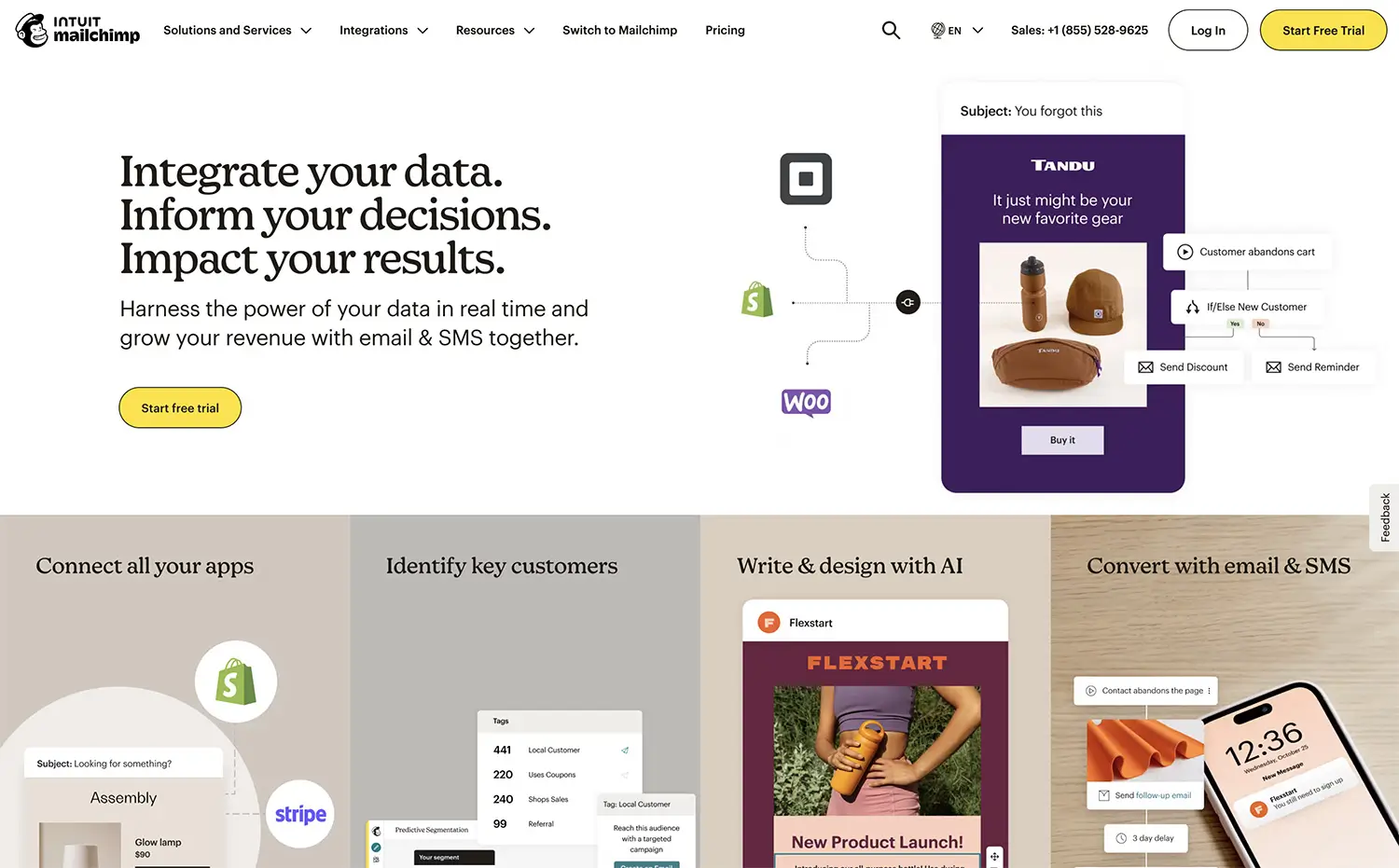
A longtime favorite for beginners, Mailchimp offers easy setup and plenty of templates. Great for small lists, but pricing climbs fast as you grow, and automation is limited compared to Klaviyo or ConvertKit.
ActiveCampaign
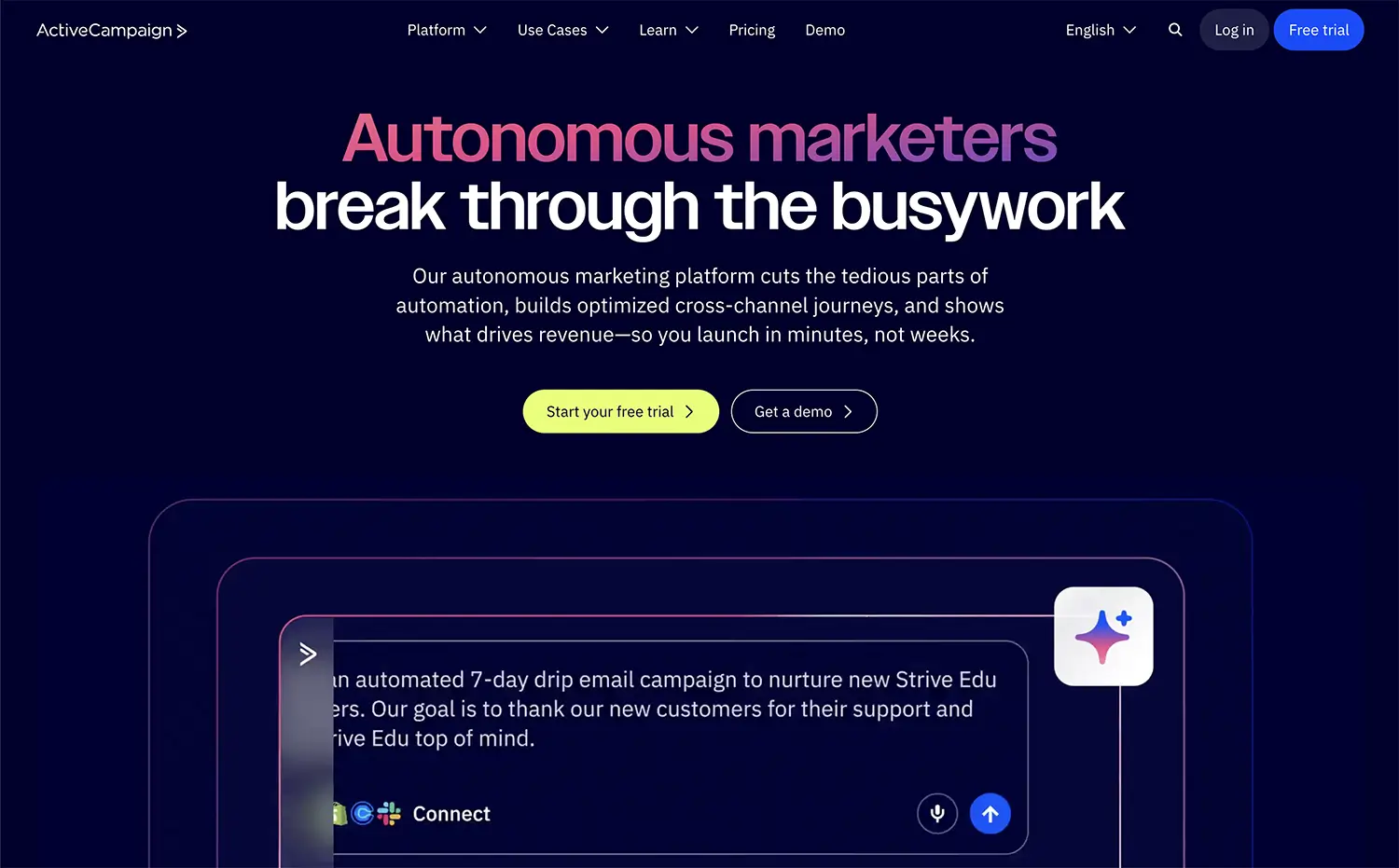
Known for powerful automation and CRM tools, ActiveCampaign suits service-based businesses or those needing advanced contact management. It’s more robust than ConvertKit but less e-commerce-focused than Klaviyo.
Drip
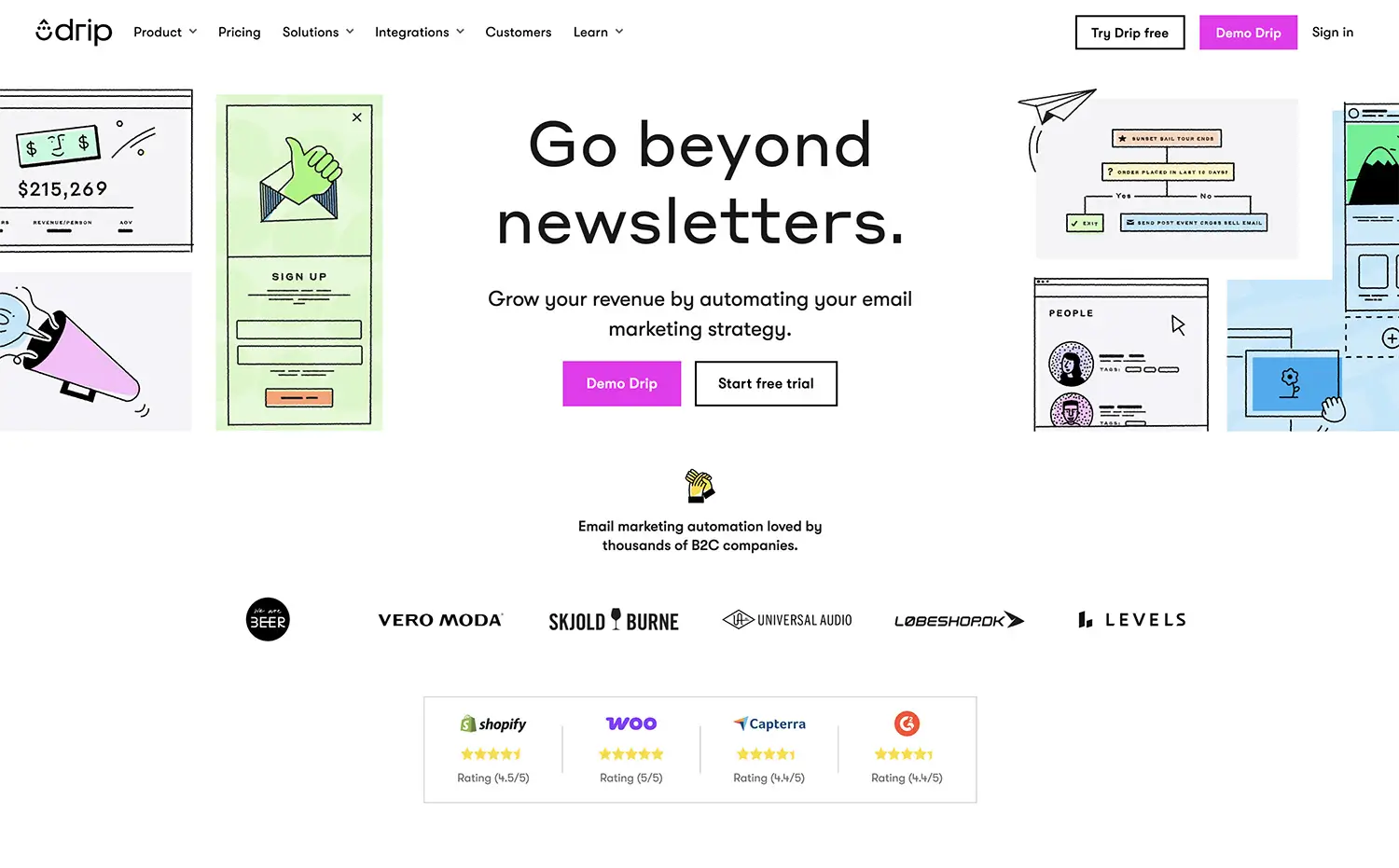
Built for e-commerce, Drip emphasizes personalization and customer journeys. It integrates smoothly with Shopify and WooCommerce but lacks the predictive analytics and depth of Klaviyo.
Beehiiv
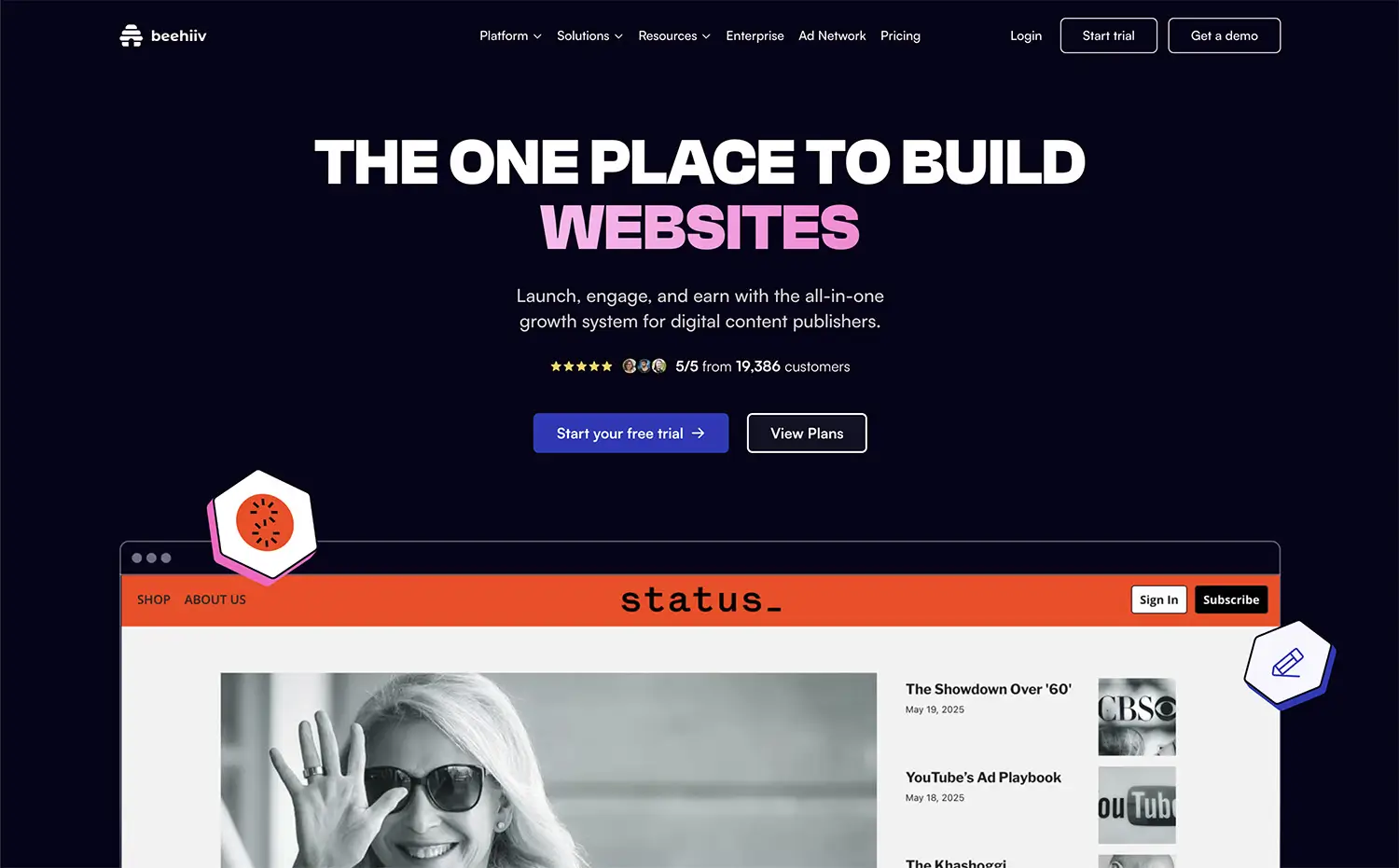
A newer platform for newsletter creators, combining publishing, audience growth, and monetization tools. Beehiiv is ideal for those wanting a Substack-style experience with more flexibility.
Flodesk

Known for its beautiful templates and flat-rate pricing. Easy to use but limited in segmentation and automation, Flodesk is best for simple or design-focused email marketing.
The Final Verdict: Which Platform Wins?
Here’s the truth: both platforms excel at what they’re built for. The question isn’t which is better—it’s which fits you.
Choose Klaviyo if you run an e-commerce brand and want data-driven automation that works while you sleep. It’s powerful, precise, and worth the learning curve.
Choose ConvertKit if you’re a creator who wants email marketing that feels natural and easy to manage. It’s simple, dependable, and made for people who’d rather create than configure.
Bottom line: Klaviyo is the data powerhouse. ConvertKit is the creatives’ go-to. Pick the one that fits your goals and let your emails do the rest.

